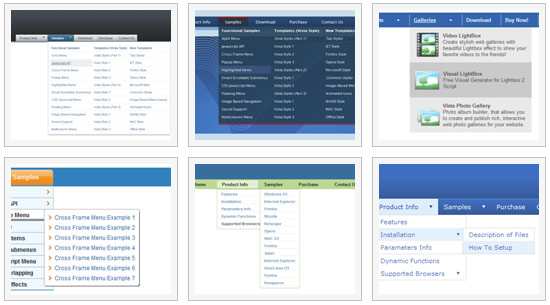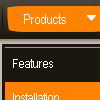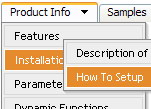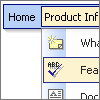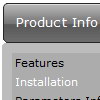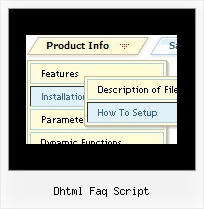Recent Questions
Q: I’m trying to add a padding before the beforeItemImage for the sub navigation bar but I can’t do it after hours off trying it.
A: You should add a separator with blank (or white) image.
var separatorVImage="deluxe-menu.files/space.gif";
var separatorVWidth="7px";
var separatorVHeight="27px";
var separatorPadding="0px";
And assign Individual style for this item
["itemBorderWidth=0","itemBorderStyle=none,none"],
Q: Is there a way to capture which menu item was clicked in the popup menu and store that information into a database?
A: See how you can find the ID of the clicked item:
var menuItems = [
["Home","javascript:alert(itVar.id)", "", "", "", "_self", "3"],
];
Q: How do you center the text within the top-level cels in the drop down navigation bar?
A: You should set the following parameter:
var itemAlignTop="center";
Q: I am currently tasked with creating a large intra-type net for our company. ( knowledge base, FAQ etc. for internal use only ).
At this time I am making plain text or table based menus and getting tired of having to add the drop menus to EVERY page individually in our little intra-web. I would like to purchase software that makes groovy looking menus, but also get the information needed to have them appear on ALL pages after editing the menu once if you know what I mean.
Unfortunately my web authoring experience is best suited to circa-1996 web pages I can hash out in notepad in my sleep. However, I have been told in order to do what I am doing I need to use CSS or styles or cascading stylesheets and not sure if your software will do that.
If I purchase this software and whip up a neat little menu, would you be able to send me information on how to include it in a css as I described above? I would essentially need to know the code or commands to have it appear in all of the pages I create, once I make the menu file. If that is something you can assist me with, I can purchase this right away.
A: Deluxe Menu is Javascript code only. It requires several .js files andit's generated on a client side.
If you don't want to create your drop menus on each page, you can try to useframes, the menu has a cross-frame mode. Also you can use aserver-side script (php, asp, vb, etc.) to generate html pages fromtemplates on your server.

